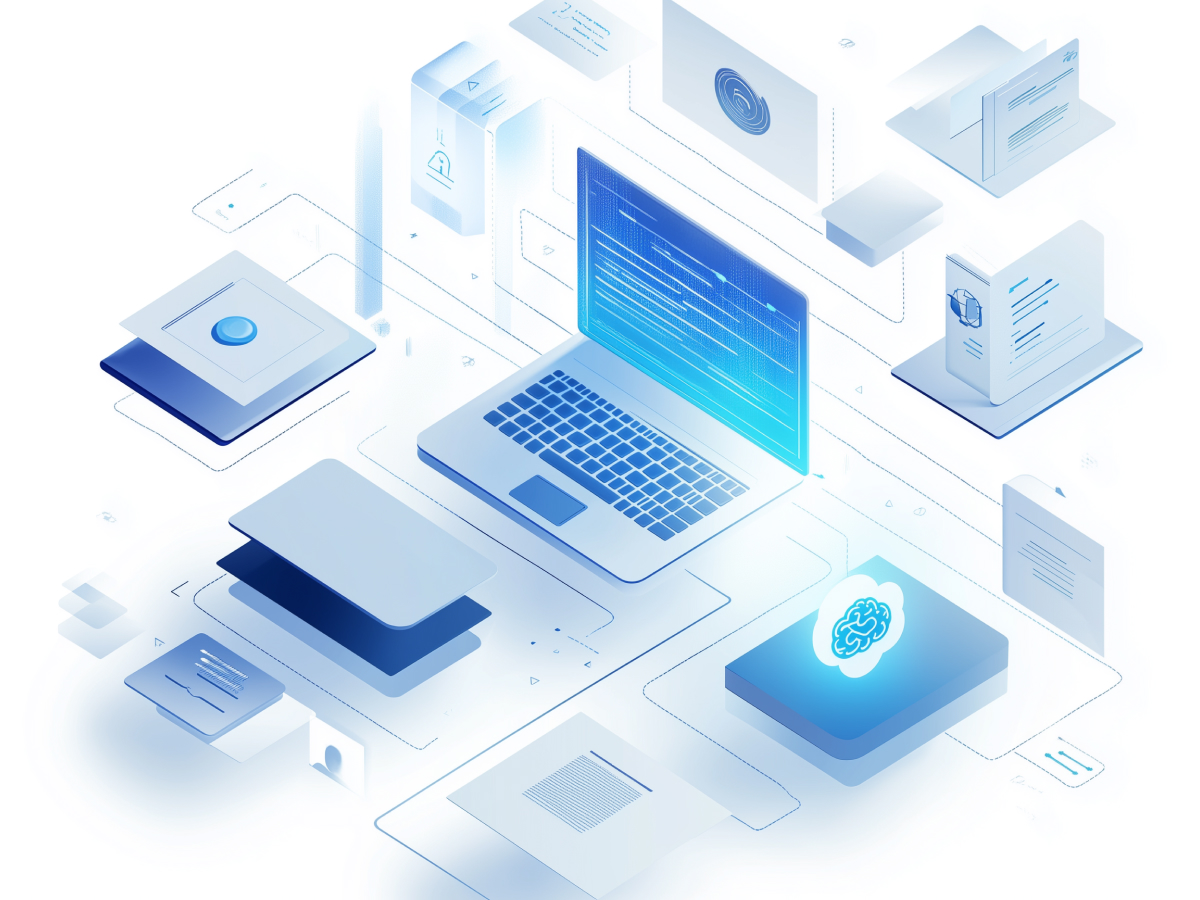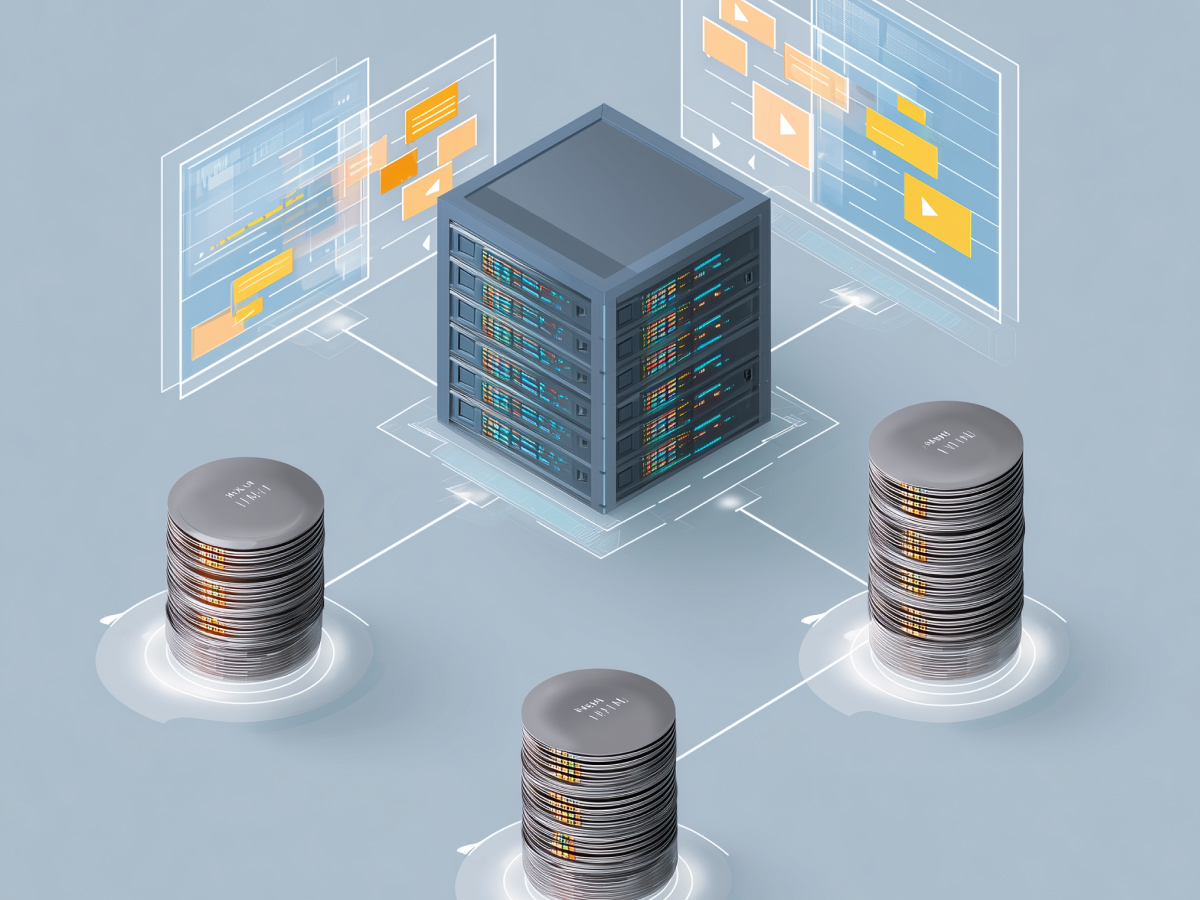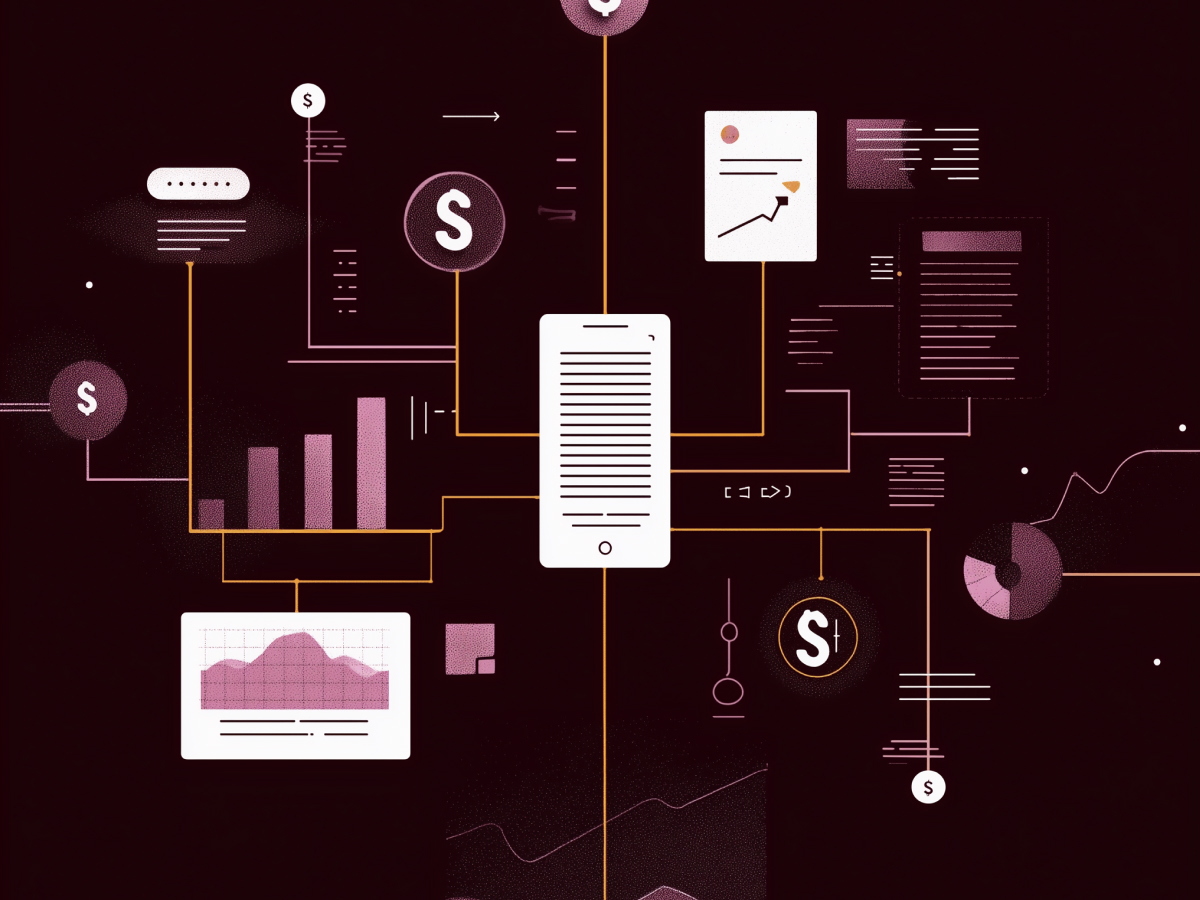Generative AI is transforming the user interface paradigm
We’re redefining how we interact with technology. Generative AI is pushing us beyond the traditional app-based interface. Instead of tapping icons one at a time, users will soon speak naturally to their devices and get things done across apps and services, without having to manage the steps manually.
The way we’ve interacted with machines has been evolving for decades, command lines in the 1970s, graphical interfaces in the 1980s, touchscreens in the 2000s, and voice commands in the 2010s. Generative AI is the next jump. It’s taking fragmented, app-specific interactions and replacing them with a unified, intelligent system. The system understands what a user wants and communicates directly with various services to execute it.
For example, instead of opening five travel apps to plan a business trip, you just say what you need, and the AI handles the flight booking, hotel, and restaurant reservations in the background. Deutsche Telekom is already prototyping this with their AI phone concept, shifting away from a screen full of icons to an intelligent assistant model. Backed by Perplexity’s cloud AI, the device runs services like object recognition from Google Cloud AI and content generation from Elevenlabs and Picsart.
This shift changes the role of software entirely. We’re moving from manual app control toward context-aware task delegation. For executives, the time to rethink your customer engagement and service delivery models is now, because the interface is no longer a touchscreen. It’s intelligence.
Early AI-first devices faced practical challenges
We’ve seen attempts to break out of the smartphone mold already, Humane AI Pin and Rabbit r1. The goal was right, move beyond icons and apps. But the execution wasn’t there. Voice commands failed. The technology didn’t respond reliably. The user experience wasn’t ready for primetime.
Humane’s device was pulled from market less than a year after launch, it’s a clear reminder that when you’re early, you’re either first or fried. Rabbit stuck around, but confidence dropped. Both had issues because they were built around AI that couldn’t fully deliver the promise of acting as a standalone assistant. Promising form factors mean nothing if functionality disappoints.
But companies like Deutsche Telekom are taking a corrected approach. Their AI phone uses a more robust stack with Perplexity and other cloud-based tools. The assistant doesn’t just perform one-off commands, it understands intent and completes tasks on behalf of the user. The updated tech integrates more tightly with existing cloud services, avoiding the reliability problems earlier devices ran into.
For leaders watching the edge of innovation, the key takeaway is this: being early isn’t enough. Execution, infrastructure, and user experience still win. Letting systems evolve instead of forcing premature disruption is not a lack of ambition, it’s strategic patience. And that’s what builds category-defining products that actually scale.
Major tech companies are investing heavily in autonomous AI agents
This is where velocity starts to matter. Big players, OpenAI, Google, are not just experimenting with AI assistants; they’re going all in on fully autonomous agents capable of handling real-world digital work. These agents don’t just respond, they act. They complete tasks without being micromanaged through every step.
OpenAI’s Operator is running on their Computer-Using Agent (CUA), which interacts with websites and apps visually, like a human clicking through, except faster and without fatigue. It doesn’t rely on special APIs or integrations, it interprets interface visuals to navigate systems. That flexibility is powerful. It’s solving tasks like completing web forms or placing online orders, with zero hardcoding.
Google’s Project Astra and Mariner are also pushing boundaries. Astra observes the user’s environment and decides when to engage. Mariner can do up to ten tasks simultaneously, look up travel info, book tickets, buy supplies, all triggered by a single voice input. Google showed this during I/O 2025: ask for a trip to Berlin, and it handles all parts of the planning autonomously. There’s still a “human-in-the-loop” layer for safety and accuracy. But the core efficiency gain is huge.
If you run a company where digital workflows matter, and for most, that’s a given, this isn’t optional. Generative agentic AI is not just advancing fast; it’s being productized. That means it’s about to impact customer support, e-commerce, travel, logistics, and everything in between. The gap between companies that implement these systems and those that don’t will widen, fast.
The shift toward on-device AI enhances performance and privacy
A lot of the early AI boom ran on cloud-first assumptions. That’s changing. Hardware giants, Samsung, Qualcomm, Apple, now see strong performance gains from running AI directly on the device. Local processing means faster responsiveness and tighter control over data. Cloud still has its place, but on-device AI is moving to the forefront.
Samsung’s Galaxy S25 launches with voice-toggled settings, like activating dark mode, processed locally in milliseconds. Google’s Gemini assistant, embedded into Samsung’s UI, lets users launch apps and issue commands without navigating menus. Qualcomm is powering this with their Snapdragon 8 Elite chip, which includes the Hexagon NPU, capable of local inferencing using small language models. That means AI generates insights and completes actions without talking to the cloud.
Security is a big win here. Local AI means less data transmission, which means less exposure. It also means high performance in low-connectivity zones. For businesses or users managing sensitive data, finance, health, communications, this matters.
Executives need to understand: on-device AI isn’t here to replace everything cloud-based. But it does change how we think about product design, latency, and sovereignty of data. The push toward decentralized, high-efficiency AI systems isn’t a trend, it’s the foundation for next-gen hardware innovation. If your future product depends on speed, privacy, or user control, this should already be in your roadmap.
Apple’s delay in generative AI integration highlights internal legacy challenges
Apple isn’t leading in AI. That’s the reality right now. Despite launching Siri long before most companies even considered voice assistants, the company has struggled to evolve it into a modern, generative AI system. The delay has nothing to do with ambition, and everything to do with legacy code and internal resistance.
After Steve Jobs passed, Apple’s AI efforts stalled. Bloomberg reports suggest that the internal Siri team had trouble getting buy-in from leadership, including software head Craig Federighi. When ChatGPT was released publicly in late 2022, Apple Intelligence didn’t even exist, not as a concept, not on the roadmap. Development didn’t gain focus until OpenAI’s momentum forced the issue.
The new “LLM Siri,” originally planned for release in 2025, is still delayed. Apple had to split Siri’s infrastructure into two, one to handle legacy commands, and another to support new, data-intensive features. This added architectural complexity has slowed progress across the board. Integration issues continue to surface, and the result is a fragmented experience.
For senior leaders in tech and beyond, there’s a broader takeaway here. Innovation slows when legacy systems are rigid and teams are too cautious. Even a dominant company with billions in cash and industry-leading devices can fall behind if internal alignment and technical adaptability break down. AI evolution demands flexibility, on product, infrastructure, and leadership levels.
AI-driven personalization through knowledge graphs improves user experience
Personal AI isn’t about novelty, it’s about relevance. Generative systems can only deliver meaningful value if they understand the user. That’s where knowledge graphs come in. These systems collect and organize data about user habits, interests, preferences, and behaviors to improve task accuracy and contextual precision.
OPPO and Samsung are leading this push. OPPO is working on a central knowledge system capable of learning from user actions and memories over time. Samsung started even earlier, acquiring Oxford Semantic and integrating its RDFox engine into the Galaxy S25 ecosystem. RDFox powers Samsung’s Personal Data Engine, which creates an individualized knowledge graph directly on the device. Importantly, it stays secure, data is stored locally using Samsung’s Knox Vault, reinforced with Knox Matrix, a blockchain-based security layer.
This setup opens the door to hyper-personalized services. Ask the device for a restaurant, it knows your location, your dietary history, your schedule, and your preferred cuisine. It can act accordingly. No app-hopping. Just outcome.
Executives need to internalize this: personalization isn’t a gimmick, it’s a competitive differentiator. Customers expect tech to proactively cater to their needs. That only happens when AI has a deep, evolving understanding of who the user is. Investing in dynamic data layers and systems that can learn and pivot based on interaction is no longer optional. It’s foundational.
Data security and cross-device synchronization are critical for personalized AI
When AI gets personal, security becomes non-negotiable. These systems aren’t just responding to preferences, they’re handling location data, communications history, decision-making behavior, and patterns over time. That creates clear value. It also creates risk if the data architecture isn’t locked down.
Samsung is handling this with intent. On the Galaxy S25, personal knowledge graphs are encrypted locally in Knox Vault, a secure enclave that isolates sensitive data. Protection is reinforced by Knox Matrix, a blockchain-based security framework designed to prevent unauthorized access, even in distributed device ecosystems.
But security is just one piece. Personalization has to follow the user. This opens up new questions around data portability. What happens when someone switches from one device to another? From phone to tablet? Or even across manufacturers? Many of these systems don’t yet handle cross-device synchronization at scale, and that introduces friction.
For leaders building products or overseeing digital infrastructure, you need clarity on how your systems manage identity, data access, and contextual continuity. Is there a migration path when devices are upgraded? Do different personas, work and personal, get isolated storage profiles? Can personal AI scale securely across multiple form factors?
You don’t need all the answers today, but you do need an architecture that anticipates them. Without this, user trust will erode and the entire value chain around personalization breaks.
App development priorities are shifting toward integrated, backend AI functionalities
The window for traditional, UI-heavy applications is narrowing. With AI agents increasingly taking control of interaction, users are no longer navigating apps, they’re seeing results. This alters how apps should be designed, built, and deployed.
The Fraunhofer Institute for Experimental Software Engineering (IESE) addressed this directly: future-proof software must operate in multi-context environments, even when users never see the interface. Tasks are handled through voice commands, embedded agents, and automation pipelines. The app’s role moves from being a front-end destination to becoming an actionable backend system exposed through APIs.
Mark Zimmermann, Head of CoE for Mobile Application Development at EnBW, put it clearly, future success hinges on intelligent integration between traditional interfaces and AI systems. Winning apps will not focus on how they look but how efficiently they can be accessed and triggered by generative agents.
For product and technology executives, this shift means a clear call to action. You have to audit current architectures and prioritize modularity. Functional endpoints need to be activated by AI, not just clicked through by humans. And you need to support interface diversity, voice, gesture, or contextual triggers, all running on the same underlying logic.
Staying competitive here isn’t about aesthetic improvements, it’s about building software that performs, regardless of how or where it’s activated. You’re designing for systems-first interaction. That’s where user expectations are heading, and fast.
Final thoughts
What’s playing out right now isn’t a feature shift, it’s a platform shift. AI isn’t just improving interfaces; it’s removing them. Devices are moving from being tools you operate to systems that anticipate and act. That changes how products are built, how services are delivered, and what customers expect next.
For executives, the opportunity is clear. If your systems still rely on traditional inputs, rigid workflows, or siloed apps, you’re already behind. The companies that win this cycle won’t be the ones with the most data, they’ll be the ones that structure it correctly, personalize it securely, and activate it intelligently through AI-driven architecture.
This shift favors velocity, systems thinking, and bold execution. Whether you’re running a Fortune 500, scaling a startup, or leading transformation inside a legacy brand, your next moves need to align with an interface-light, intelligence-first future.
Make sure your teams aren’t optimizing for yesterday’s UX. Build for where users are heading, not where they’ve been.





